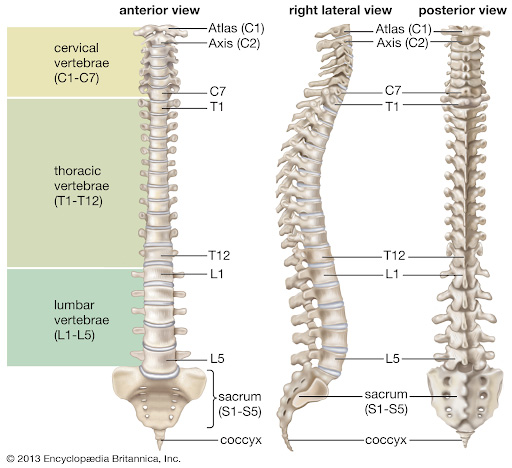Lumbar Radiculopathy and Sciatica
Lumbar radiculopathy and sciatica occur when a nerve in your back is pinched or compressed. This causes pain down the back of your leg and into your foot. They can be caused by a traumatic event or gradually over time. These conditions occur most commonly in males and females aged 30-50 years. Risk factors include repeated lifting, participating in weight-bearing sports, obesity, smoking, sedentary lifestyles, and poor posture. The majority of these cases resolve with good physical therapy.
What Are Lumbar Radiculopathy and Sciatica?
There are 33 bones that make up your spine. Vertebrae make up these bones. These vertebrae stack on top of each other. Between them are intervertebral discs and on each side, there are openings where the nerve comes out. These nerves then go to the rest of the body. Injuries that occur close to the spine can cause damage to the nerve and its roots.

Common conditions that can cause lumbar radiculopathy and sciatica:
- Herniated disc
- Overstretching of a nerve or nerve root
- Piriformis syndrome
- Bone spurs
- Arthritis (stenosis)
- Inflammation
How Are Lumbar Radiculopathy and Sciatica Diagnosed By a Physical Therapist?
Your physical therapist will conduct a thorough evaluation to rule out and in certain conditions. This begins with a detailed health history. Here your physical therapist will ask questions such as:
- When did the pain start?
- How did it start?
- What treatment have you had so far?
- What makes it better/worse?
- Is this limiting you from completing certain activites?
A physical examination will consist of:
- Posture screening
- Movement analysis
- ROM testing
- Strength testing
- Nerve testing
With this information, your physical therapist will create a plan of care suited to your needs and goals. Physical therapists will then work closely with medical doctors and will refer out if evaluation findings require it.
How Can a Physical Therapist Treat My Lumbar Radiculopathy and Sciatica?
In most cases, physical therapy is more effective for lumbar radiculopathy and sciatica than surgery and medications. This will be determined during your initial evaluation. Your physical therapist will then work closely with you to create a personalized plan. This will consist of:
- Reducing pain and other symptoms
- This will be accomplished by activity modification, body mechanics, ergonomics, and modalities such as heat and ice.
- Improving motion and flexibility
- Gentle exercises will be selected to help restore pain-free motion and improve mechanics.
- Improving strength and endurance
- Exercises will be selected to restore strength and endurance to weakened areas such as hip extensor muscles, hip abductor muscles, back extensors, and abdominals.
- Restore nerve mobility
- Recent studies have shown nerve glides techniques to be effective at restoring motion and decreasing pain. These exercises should be completed in a series fashion and according to symptoms.
- Learning a home exercise program
- Your physical therapist will assign a home exercise program that needs to be completed on a daily basis.
- Returning to activities
- Planning will be given on when and how to return to valued activities.
If the injury is not getting better or you have any concerns, schedule an appointment with a Physical Therapist. At Symmetry Physical Therapy, our therapists are specially trained in a variety of areas to get you back to living the life you want as soon as possible! Firstly, our Physical Therapists will review your medical history followed by a complete and thorough examination of your lower back. Then they will assess your posture, strength, flexibility, and movement. As a result, they will determine the source of the problem and come up with a plan to recover and meet your goals.
How Long Will It Take to Recover From Lumbar Radiculopathy?
Lumbar radiculopathy and sciatica can take anywhere from 2 weeks to 6 months. Once you begin therapy you will start to feel better. Then, the time frame for recovery depends on the extent and cause of the condition. Rehabilitation is important to restore strength and flexibility as well as to prevent a recurrence. Additionally, seeing a Physical Therapist who creates a plan tailored to your individual needs will be helpful in decreasing the recovery time and preventing a re-injury. So, if you have any questions or are looking to recover as soon as possible click here to schedule an appointment to see us today!
